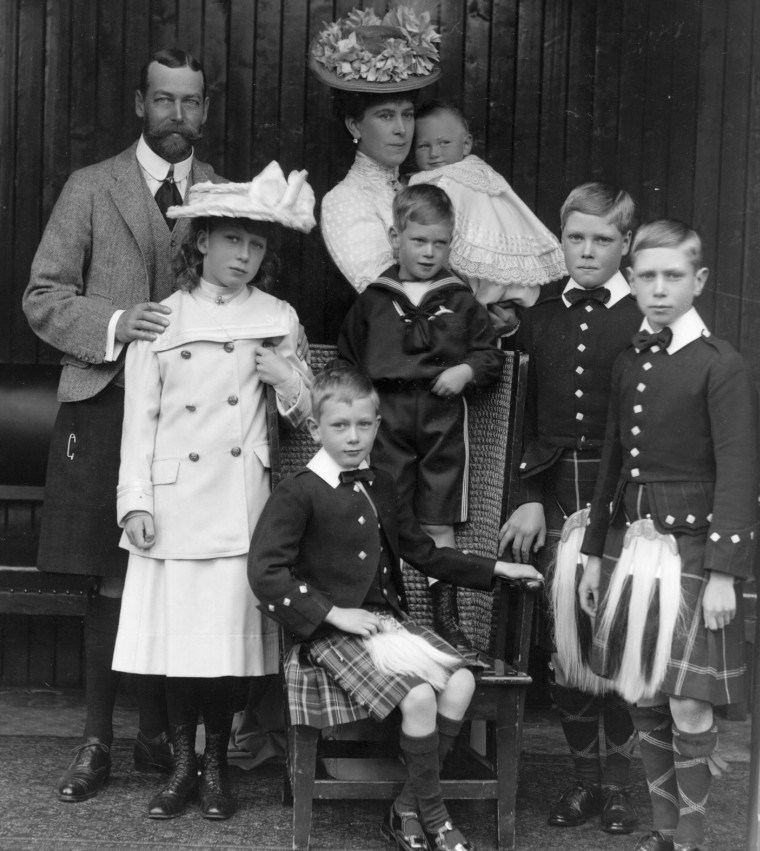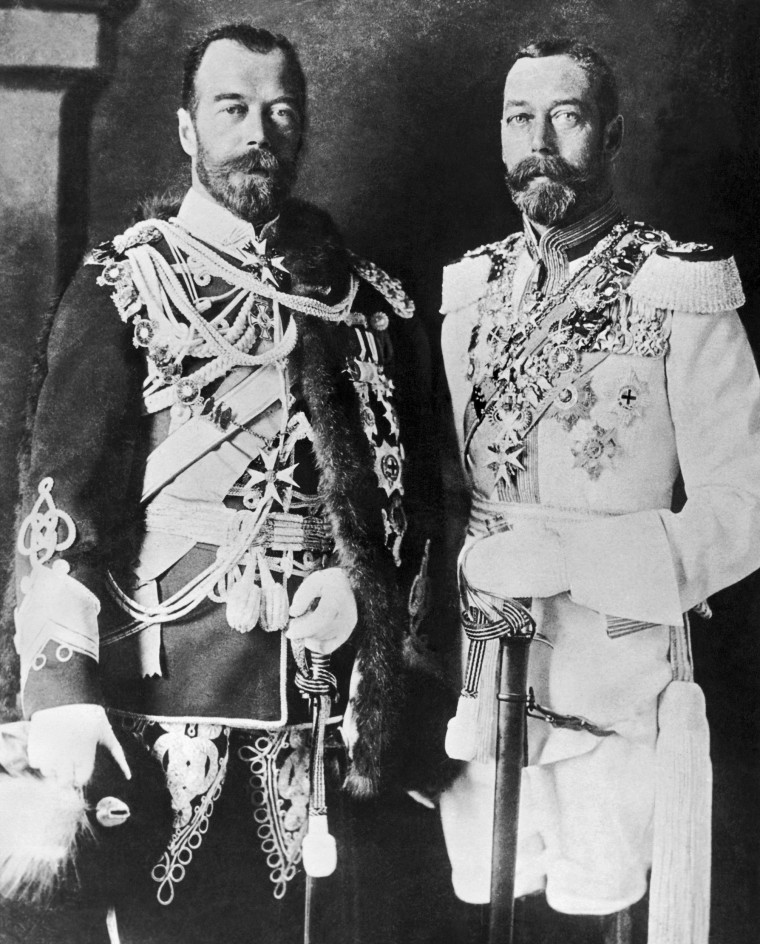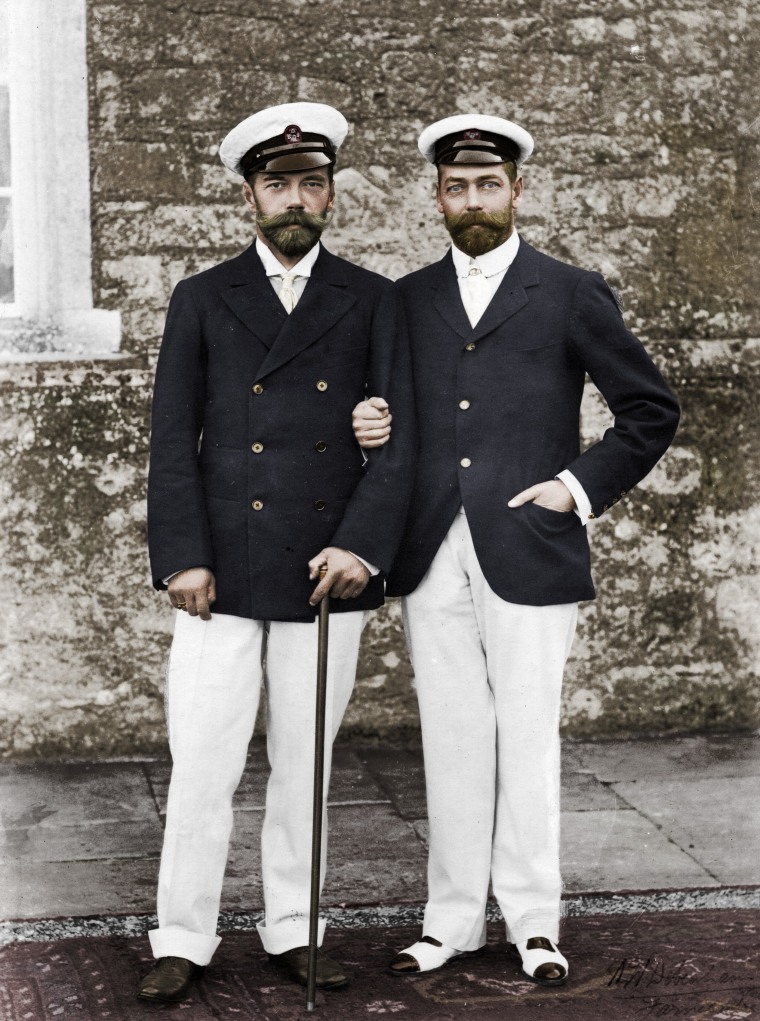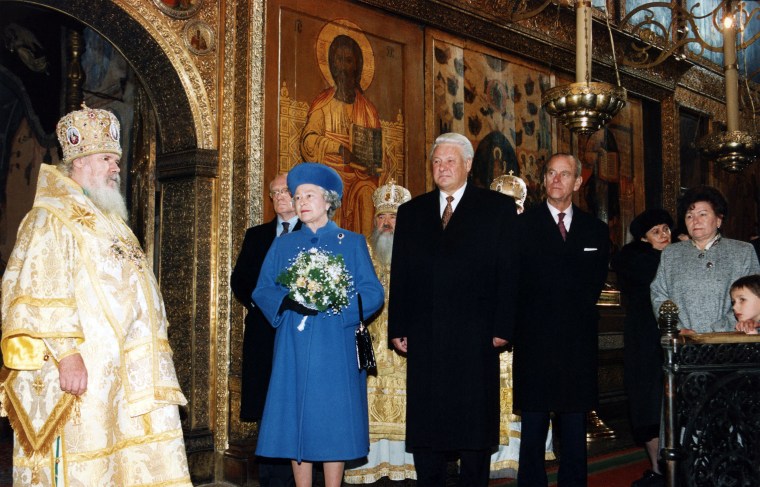"The Crown" tells the story of the reign of the (now deceased) Queen Elizabeth II, who was on the throne from 1953 until just this past September.
But the story of the Windsors is more than the story of England, thanks to the intermarrying of royal families over the decades and centuries, it's also the story of Europe ... and, as we learn in Season Five, of Russia.
In Episode Six, a visit between the queen and then-Russian President Boris Yeltsin in 1994 serves as a springboard to flash back to the Russian Revolution of 1917, the execution of Tsar Nicholas II and his Romanov family, and to the DNA sample given in 1993 Prince Philip, the Duke of Edinburgh and the queen's husband, to help identify the unearthed remains of the Romanovs.
But how could this be? Students of history may be well-acquainted with the intermingling of the House of Windsor and the Romanovs, but maybe not everyone who watches "The Crown."
TODAY spoke with Russell E. Martin, professor of history at Westminster College in Pennsylvania, and author of "A Bride for the Tsar: Bride-Shows and Marriage Politics in Early Modern Russia," to get the scoop about the links between the two dynasties.
Were King George V and Emperor Nicholas II related?
Short answer: Yes, they were first cousins.
George's mother Alexandra and Nicholas' mother Dagmar were daughters of King Christian IX of Denmark. Dagmar wed Russian Emperor Alexander III in 1866 and had Nicholas; Alexandra married Edward, Prince of Wales, who became Edward VII, in 1863, and had George.
George's royal house had actually been the House of Saxe-Coburg and Gotha, but after 1917 the name was changed to Windsor, when German names were not very popular among the British (see: World War I).

George V was Queen Victoria's grandson, and grandfather to the future Elizabeth II.
Notes Martin, "Christian IX is sometimes known as the 'Father-in-Law' of Europe,' because his children ruled or married into families that ruled in four European monarchies (Denmark, Greece, the UK and Russia)."
Did George and Nicholas know each other?
In fact they did, and frequently met, says Martin. When they were both young, there were regular vacations spent in Denmark, attended by Dagmar and Alexandra and their children, as well as other relatives. Meetings as adults included:
1893: While still Prince of Wales, the future George V wed Princess Mary of Teck and Nicholas (still the heir apparent, or Tsesarevich), attended.
1894: When Alexander III died (Nicholas' father and George V's uncle), George attended the funeral in St. Petersburg.

1909: The Romanov and Saxe-Coburg and Gotha families (the future Windsors) met up on the Isle of Wight for Regatta week and a naval review.
1913: On the eve of World War I, the cousins met in Germany for the wedding of the only daughter of their mutual cousin, the German Emperor (Kaiser Wilhelm II). There’s even a photo of them wearing German uniforms, since it was common for royalty to wear each other’s uniforms and orders and medals when on visits to each other, says Martin.
"They got on very well, personally," according to Martin. "The U.K. and Russia as nations had many points of potential conflict around the globe, and their overseas interests made them natural rivals. But George V very much liked Nicholas II as a man, and the feeling was mutual."
They looked a lot alike. Did people notice this at the time?
Photos of the pair of them together made the resemblance impossible to miss. There are at least two photos of the cousins together: One from George's wedding to Mary in 1893, and the 1913 picture of them in German uniforms, that attest to the strong resemblance.

Additionally, said Martin, "There were several occasions during the wedding in 1893 where guests approached one or the other to chat only to discover that they were talking to the wrong man .... Most people attributed their resemblance to their Danish mothers."
During the Russian Revolution, did Nicholas ask for help from George? How did George respond?
The failure of the British government to extend asylum to the Romanovs was, for decades afterward, blamed on the then-Prime Minister Lloyd George. But when documents in the royal archives were opened to researchers, it turned out that George V was the one responsible for blocking asylum. Much of this information, said Martin, comes from the 1984 biography by Kenneth Rose, "King George V."
Lloyd George’s government was willing to grant asylum on humanitarian grounds and because of Russia’s alliance with Britain in the war, explains Martin, but the king feared the rising tide of worker unrest in Britain, the same kind of unrest he felt was responsible for toppling his cousin in Russia.
"George V very deeply and sincerely mourned the murders of Nicholas II and his family in July 1918," said Martin. "One can only wonder what sense of responsibility he may have privately felt when he received the news of the murders in Ekaterinburg."

The Russian Imperial Romanov family (which included Nicholas II, his wife Alexandra Feodorovna and their children Olga, Tatiana, Maria, Anastasia and Alexei) were imprisoned in Alexander Palace following the February Revolution, then transferred first to Tobolsk, then to Ekaterinburg in the Ural Mountains. In July 1918, the family was shot and bayoneted to death by revolutionaries, and the bodies were stripped, buried and mutilated with grenades so they couldn't be identified, then left in a mass grave in the Koptyaki forest.
Why was Prince Philip involved in identifying the Romanov remains?
Nicholas II's wife Alexandra and Prince Philip both descended from Princess Alice of Great Britain and Ireland, who was the daughter of Queen Victoria. Alexandra and Prince Philip were matrilineally descended, with all their family connections through women.

“That’s perfect for a comparison of mitochondrial DNA, which is transmitted to offspring exclusively from the mother,” said Martin.
Since the bodies of the Romanovs were left in a mass grave whose particular location was not well known, it took decades before they could first be found, and second identified. Both the Red Army and the Communist party refused to allow any investigation of the murders, so when a geologist found the grave in 1979, he kept it a secret until after the Soviet Union fell in 1991, explains Andrew Cook in "The Murder of the Romanovs."
Nine skeletons were found buried in that grave, and over the years five of them were identified as the missing Romanovs: Nicholas, Alexandra and three of their four daughters. (The other four skeletons belonged to the servants of the Imperial Family who were executed along with them, per the investigation.)
Prince Philip's genetic connection to the Romanovs helped scientists make some of the early identifications. He gave a blood sample in 1993 that helped narrow things down.
"Prince Philip’s mitochondrial DNA was used to establish the identity of the bones of Alexandra and three of her children, which were discovered in 1991," said Martin. "The remains of Nicholas’s and Alexandra’s two other children (Alexei and one of the daughters), who were buried separately, were discovered in 2007 and were also conclusively identified using, in part, Prince Philip’s DNA sample."